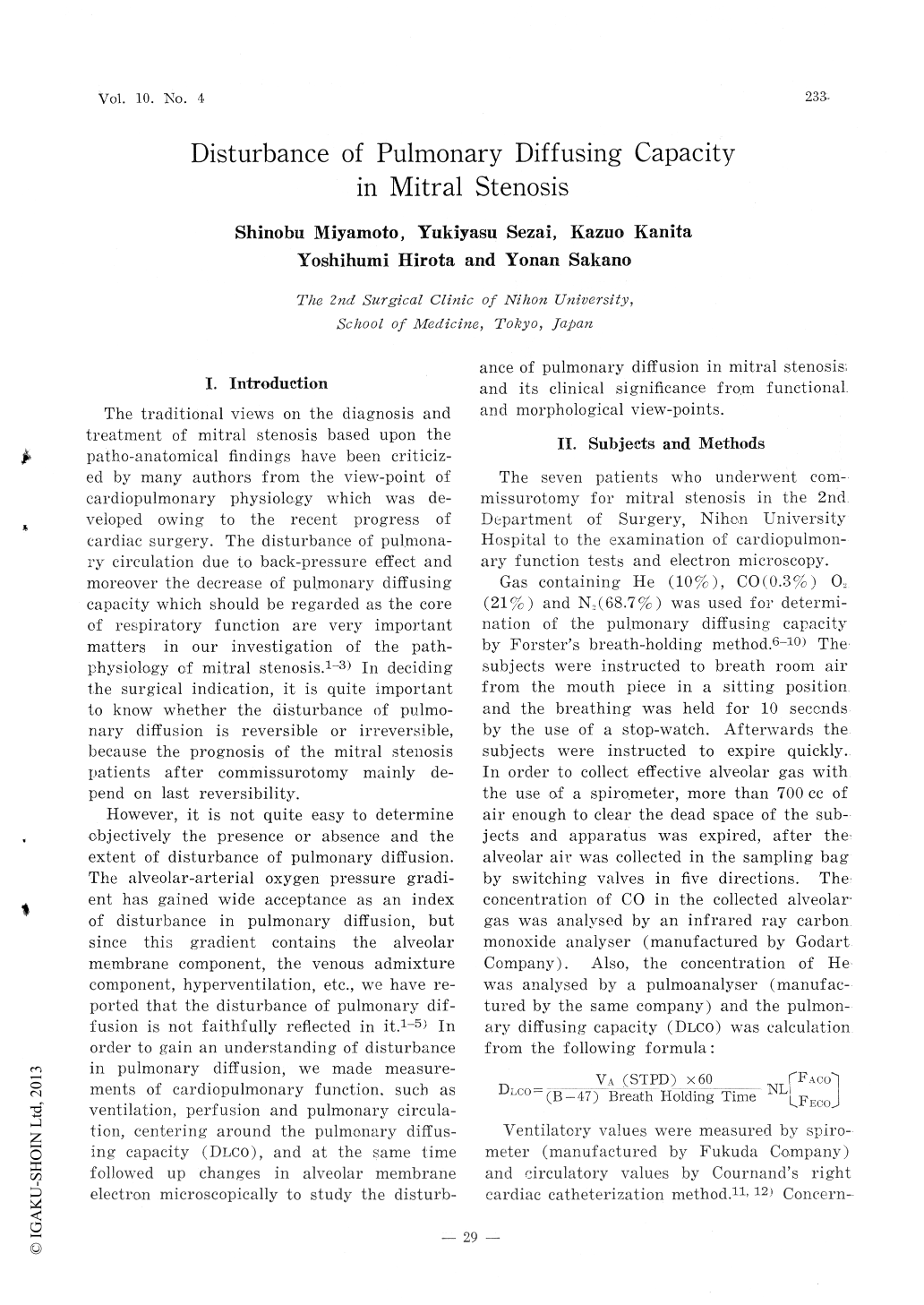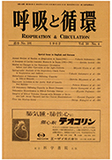- 有料閲覧
- 文献概要
- 1ページ目
For purposes of elucidating the pathophy—siology of mitral stenosis and determining the indication of commissurotomy, remarks have been made regarding the method of measuring—the disturbance of pulmonary diffusion and its clinical significance.
The alveolar-arterial oxygen pressure gradi—ent has hitherto been used as an index of the disturbance of pulmonary diffusion. Changes in this gradient due to a mixture of the membrane component, the venous admixture component and hyperventilation were studied in our cases. Investigations into the A-a gradient on the basis of the diffusing capacity measured by an CO analyser disclosed that the cases of disturbance of pulmonary diffu—sion due chiefly to the membrane component by the DLCO (eases of the increased A-a gradi—ent) were irreversible after commissurotomy, while the cases of the high DLCO due to the venous admixture component or hyperventila—tion were reversible postoperatively.
On electron microscopy of the alveolar membrane, a marked hypertrophy was observ—ed in the basement membrane of the blood—air pathway in all the cases if the low DLCO, and this condition suggested the disturbance of pulmonary diffusion.
The pulmonary pressure, the pulmonary capillary pressure, the pulmonary vascular re—sistance or the alveolar-arterial oxygen pres—sure gradient has hitherto been taken as an index to the indication of an operation for mitral stenosis. From the standpoint of pulmonary physiology, the pulmonary diffus—ing capacity and the basement membrane of the alveolar membrane are of great signifi—cance in the prognosis of this disease after commissurotomy.

Copyright © 1962, Igaku-Shoin Ltd. All rights reserved.


